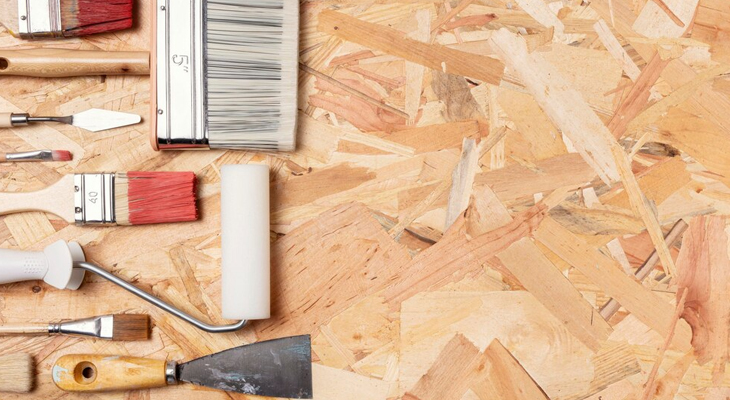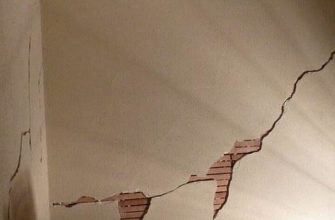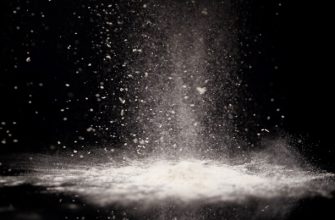With so many houses being built these days, it’s important to be prepared for any repair or renovation job that comes your way.
That’s where spackling comes in. Spackling is a simple technique that can be used to fill in any small gaps or holes in a surface. It’s a great way to patch up drywall, plywood, or anything else that needs some extra protection.
If you’re new to spackling, we have a helpful guide that will teach you everything you need to know. So don’t hesitate – give spackling a try today!
- Best way to apply spackle to plywood
- Things to avoid when spackling on plywood
- Benefits of spackling plywood
- Enhance the attractiveness
- It prevents moisture damage by keeping the wood dry
- It repairs wood quickly and effectively
- It’s environmentally friendly, as it doesn’t require any sanding or finishing
- Conclusion
Best way to apply spackle to plywood
When spackling a hole in plywood, it’s important to use the right kind of spackle. There are a few different types of spackle available on the market, and each has its own unique properties and benefits.
One of the most common types of spackle is adhesive based spackle, which is made up of a number of small adhesive particles that bond together as you apply it. This type of spackle is best for smaller holes that need just a little bit of coverage. It also dries quickly and doesn’t require primer or sealant to keep it from drying out.
On the other hand, a waterproofing spackle is made up of a number of silicone beads that help to provide waterproofing and protection against moisture and humidity. This type of spackle can be used for larger holes or areas that need more extensive coverage. It also dries slowly so you have time to complete the job correctly before it starts to crack or peel off.
There are a few different ways to spackle on plywood. The most common way is to use a drywall joint compound, but there are other options as well.
One option is to use spackling paste, which is a type of adhesive that can be used on both wood and metal. This is the easiest option because you just need to apply it to the area you want to spackle, and then attach the plywood with wood screws or nails.
Another option is using spray foam insulation as a spackle. This works by spraying polyurethane foam onto the surface of the plywood and then applying drywall joint compound over it. This makes it very difficult for water or other liquids to penetrate the foam, which makes it an ideal choice for areas that are likely to get wet (like roofs).
Finally, you can also use silicone sealant as a spackle. This comes in a tube format and can be sprayed onto the surface of the wood or metal. Silicone sealant lasts longer than other types of spackling and dries more quickly than spray foam insulation, making it ideal for areas that need quick coverage (like kitchens).
Do you want to use your old spackle which has been dried up, Dont worry we have a perfect guide for you.
Things to avoid when spackling on plywood
There are many things to avoid when spackling on plywood, as it can be a messy and time-consuming process. Here are a few tips to help you get the job done successfully:
- Make sure that you have the correct supplies before you start spackling: spackle, sandpaper, primer and paint.
- Work carefully and slowly so that you don’t end up with any mistakes.
- Take your time with the application of the spackle; too much pressure can cause wrinkles or tears in the plywood surface.
- Let the spackling dry completely before painting or using any other materials over it.
Benefits of spackling plywood
Enhance the attractiveness
If you’re looking to improve the appearance of your wood surfaces, spackle is a great option.
Spackle is a type of filler that comes in a variety of colors and can be used on both wood and plastic. It functions like glue, but its main purpose is to fill in small gaps and cracks in the surface of the wood. This helps to create an even look and reduces the chances of water or other liquids seeping into these spaces and causing damage.
In addition, Spackle can also be used to cover up minor scratches or blemishes on the surface of the wood. It’s easy to apply and doesn’t require any special skills or tools, so it’s a good choice for anyone who wants to improve the appearance of their wood without having to spend a lot of money.
It prevents moisture damage by keeping the wood dry
Plywood is a popular material for use in construction, and it’s often used as the substrate for walls and other items. It’s a relatively easy material to work with, but it can be damaged easily if not treated properly.
One of the most common methods of damage is moisture damage. This happens when water seeps into the wood and causes it to swell and contract, eventually leading to cracks or tears. Spackle is a type of adhesive that’s designed specifically for preventing moisture damage from occurring.
When spackle is applied to plywood, it forms a protective layer that prevents water from entering the wood and causing damage. This layer also resists compression, which helps to keep the plywood in its original shape. Additionally, spackle can also be used to fill any existing holes or gaps in the plywood surface, which restores its original appearance.
If you’re looking for a way to protect your plywood from moisture damage and other forms of damage, then spackle may be the solution you’re looking for. It’s simple to use and will provide long-term protection against damage.
It repairs wood quickly and effectively
Spackle is a type of adhesive that is used to repair wood quickly and effectively. It’s made from a variety of ingredients, including water, sawdust, and Portland cement.
When spackle is applied to a wooden surface, it forms an extremely strong bond that repairs the wood quickly and properly. This makes it ideal for repairing drywall, flooring, cabinets, and other structures made from wood.
Additionally, because spackle is waterproof, it can be used to seal around windows and doorways in wet environments. It can also be used to fill in cracks or joints in wood surfaces.
It’s environmentally friendly, as it doesn’t require any sanding or finishing.
It’s environmentally friendly, as it doesn’t require any sanding or finishing
Using spackles on plywood is a great way to repair damage and improve the look of your furniture. It’s environmentally friendly, as it doesn’t require any sanding or finishing.
Spackle is a type of glue that is made from asphalt and water. When mixed together, it forms a sticky substance that you can use to fill in gaps and cracks in wood. It’s also waterproof, so you can use it to fix leaks and wet areas.
Spackle is easy to use and comes in a variety of colors to help you match the color of the wood perfectly. You can also buy premixed kits that contain everything you need, so all you have to do is mix the ingredients together and apply it using a brush or roller.
Conclusion
Spackling or filling cracks in plywood is a time-tested application. This also neatly hides imperfections making it an attractive option for people with a tight budget. However, make sure the spackle used does not contain any harmful chemicals that could ruin your woodwork.









